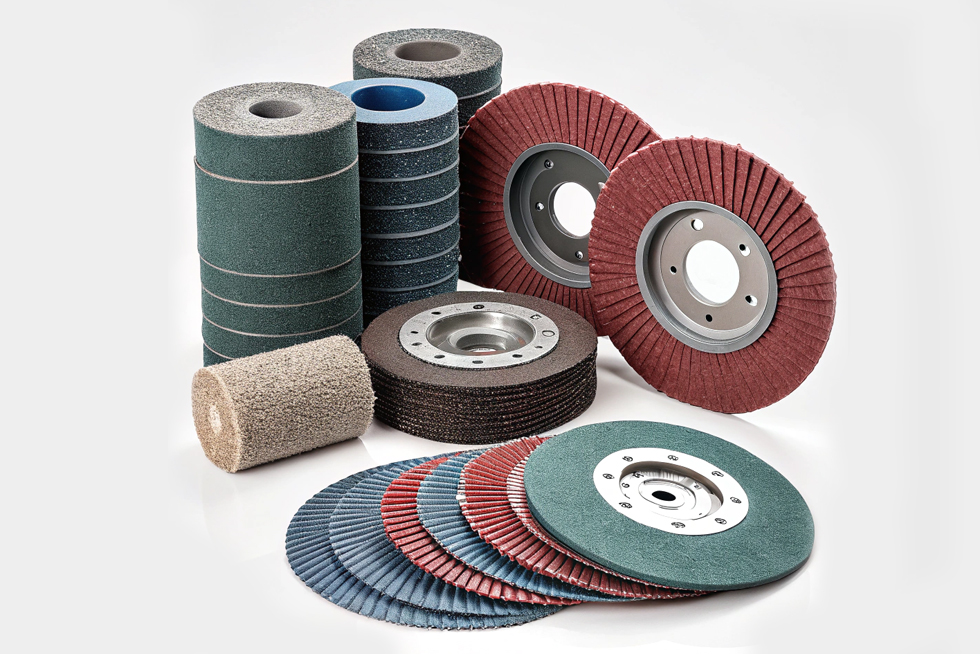Home / News & Blog / Abrasive Blog / Why Calcined & Coated Abrasive Are Essential for Coated Abrasives Manufacturing
When it comes to making high-performance coated abrasives, simply choosing the right abrasive grain isn’t enough. The real game-changer? High-temperature calcination and coating treatments. These processes improve the hardness, toughness, bonding strength, and lifespan of abrasive grains, making coated abrasives more efficient and durable.

In this guide, we’ll break down why calcining and coating abrasive grains are must-have steps in coated abrasives manufacturing—and how they boost grinding performance.
Coated abrasives can be made from various abrasive materials, but not all grains are created equal. In China’s coated abrasives industry, common abrasives like aluminum oxide and silicon carbide dominate, while superhard abrasives are rarely used.
Abrasive Grain Shapes in Coated Abrasives
Abrasive grains for coated abrasives typically come in flake or needle-like shapes, as these improve grinding efficiency.
Flake-shaped grains: Height (h), length (L), and width (w) ratio ≈ 1:1:1/3
Needle-shaped grains: h:L:w ≈ 1:1/3:1/3
Equiaxed grains (used in bonded abrasives): h:L:w = 1:1:1
But shape isn’t the only factor. Hydrophilicity (wetting ability) is critical. The better an abrasive grain bonds with adhesives, the stronger and more durable the coated abrasive will be. To improve bonding, abrasive grains need calcination or coating treatments.
Calcination—heating abrasives at 800–1300°C for 2–4 hours—transforms their structure, making them tougher, more stable, and longer-lasting.
Benefits of Calcined Abrasives in Coated Abrasives
Increased Hardness & Toughness: Microhardness improves by 10%, boosting grinding power.
Better Hydrophilicity: Wetting ability improves 3.5x, strengthening the bond with binders.
Extended Lifespan: Coated abrasives last 30–50% longer after calcination.
More Consistent Performance: Less grain breakage means smoother, more efficient grinding.
For coated abrasives manufacturers, using calcined abrasive grains is a no-brainer—they cut better, last longer, and reduce overall production costs.
Besides calcination, coating abrasive grains takes performance to the next level. These coatings create a stronger bond between the abrasive and the binder, boosting efficiency and durability.
Common Coating Treatments for Abrasive Grains
1) Metal Salt Coatings
Adding metal salts like nickel nitrate, cobalt nitrate, or borax-nickel nitrate increases grinding efficiency by 4–6 times. These coatings are applied at 0.1–1.0% concentration, then calcined at 600–1200°C to maximize bonding strength.
2) Ceramic Coatings
A mix of feldspar, limestone, and clay coats the abrasive surface, making it more resistant to wear and tear. After calcination, these coated grains deliver smoother grinding and a longer lifespan.
3) Resin Coatings
Abrasive grains can also be coated with thermosetting or thermoplastic resins, sometimes combined with titanium oxide, iron oxide, or zirconium oxide for better bonding strength and hydrophilicity.
4) Hollow Sphere Abrasives
An innovative approach involves binding abrasives to hollow plastic resin spheres. These lightweight, structured grains reduce friction and enhance grinding efficiency—ideal for precision applications.
High-temp calcination and coating treatments aren’t just extra steps—they’re essential for making high-quality coated abrasives. Here’s why:
Faster Grinding – Treated abrasives cut more efficiently, reducing processing time.
Stronger Bonding – Coated grains adhere better to binders, preventing early wear.
Longer Lifespan – Less grain breakage means coated abrasives last longer.
Cost Savings – Longer tool life reduces replacement frequency, saving money.
For manufacturers aiming to improve product performance, production efficiency, and cost-effectiveness, using calcined and coated abrasives is the key to success.
In coated abrasives manufacturing, abrasive grain treatment is the difference between an average product and a high-performance, long-lasting one. High-temp calcination improves grain toughness, while coatings enhance bonding and grinding efficiency.
At DOMILL, we supply high-quality calcined and coated abrasives, including Brown Fused Alumina (BFA), White Fused Alumina (WFA), and Silicon Carbide (SiC), customized for coated abrasives applications. Contact us today for expert consultation and bulk supply solutions!